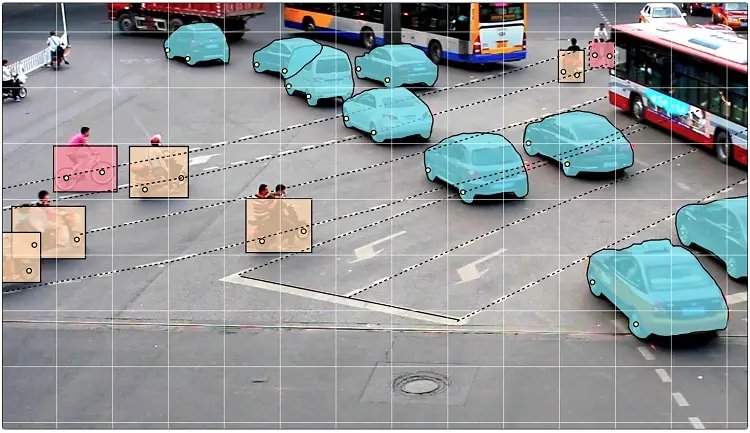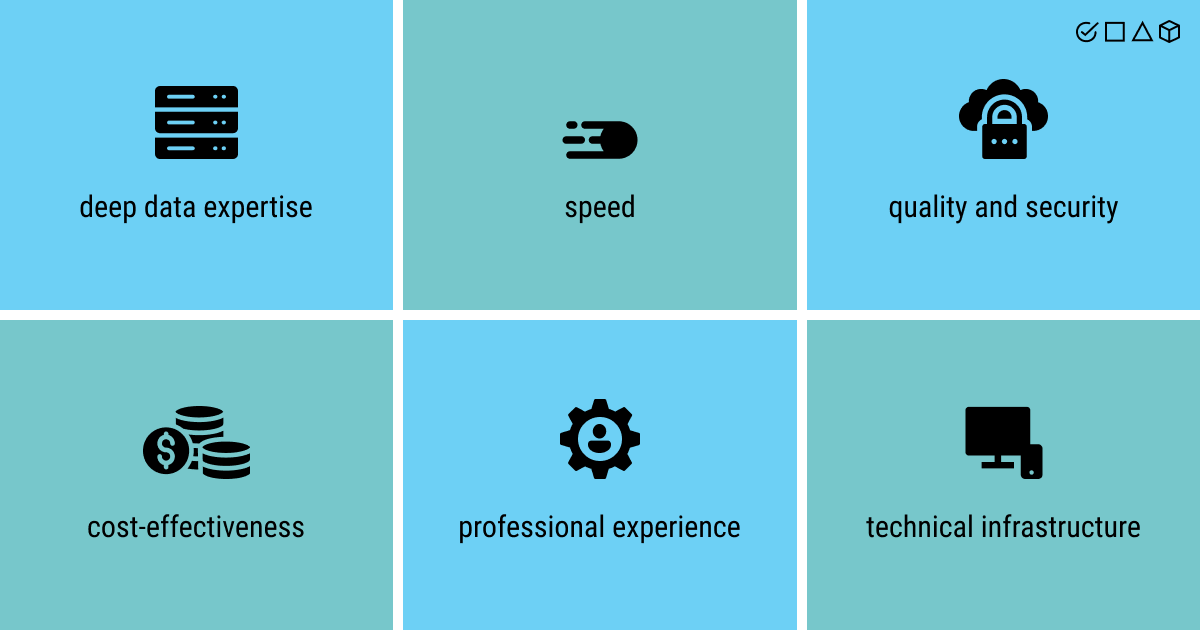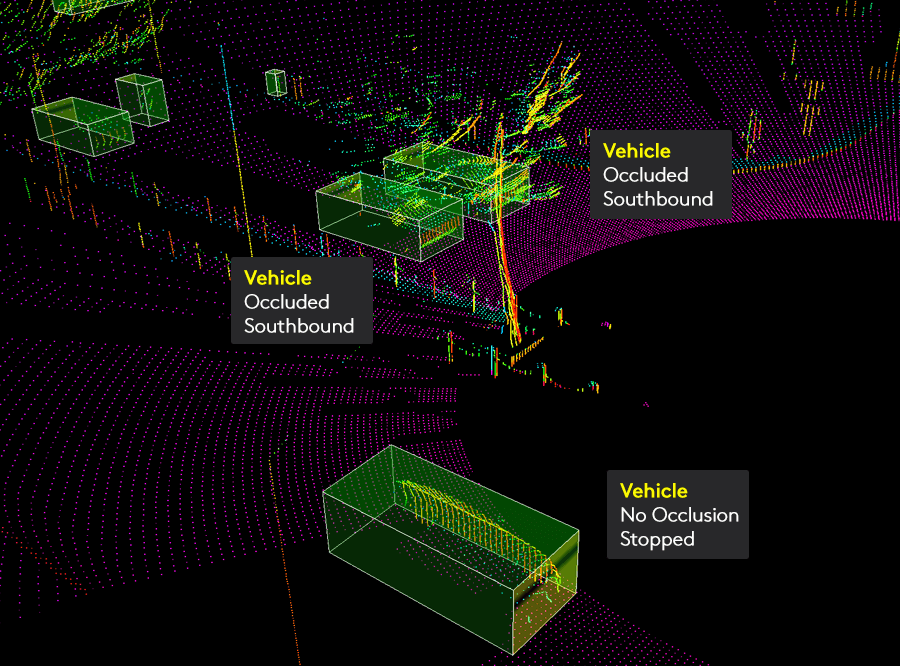Data annotation outsourcing: A step-by-step guide

Are you working with image-based data and struggling to keep up with the workload? Image annotation is an important part of any machine learning project that deals with image or video data, helping to speed the model development process. Unfortunately, not everyone has the technical skills or time needed for efficient manual annotation of images. This can create a bottleneck in your workflow, causing delays and costing valuable resources.
Fortunately, outsourcing your image annotation needs could be exactly what you need to propel your machine-learning projects forward faster—no specialized knowledge required! In this blog post, we'll discuss how image annotation outsourcing can help you streamline development while keeping costs under control — read on to learn more!
What is data annotation?

In order to train machine learning models, images in a dataset are labeled through the process of image annotation.
A machine learning or deep learning model processes tagged images after the manual annotation is finished in order to reproduce the annotations without human oversight.
Any errors in the labels are duplicated as well because image annotation establishes the criteria that the model strives to follow. As a result, accurate image annotation is one of the most crucial computer vision jobs since it provides the framework for training neural networks. Model-assisted labeling is the term used to describe the practice of model labeling images on its own.
Read here How image annotation is leading the way in AI-ML?
Why you should outsource data for image annotation?
There are several reasons why a company or organization might choose to outsource image annotation:

1. Saves your time
The process of assembling and training a crew for data gathering and image labelling is extremely time-consuming. You can quickly find annotators who meet your needs by partnering with a seasoned data annotation business. Additionally, because the majority of the jobs involving image annotation are project-based, you can swiftly change your personnel numbers as necessary. This speeds up the entire process and ensures that your datasets are of higher quality.
2. Simple scaling
Computer vision projects may be impacted by changes in data volume, resource limitations, human resource shortages and surpluses, and other variables. You may adapt to these variations and manage change more effectively by outsourcing data annotating.
3. Your dataset will get expertise from expert data annotators
Data annotators are well-trained professionals with the necessary domain knowledge. While data annotation may be one of your internal talent pool's tasks, it is the only specialized job for data experts. This makes a significant difference because annotators will know which annotation methods work best for particular data types, how to annotate mass data, clean unstructured and semi - structured data, organize new sources for varied dataset types, and much more. With so many delicate factors at stake, data annotators or data vendors would make sure the final data that users will receive is flawless and can be straightforwardly fed into the AI model for testing and training purposes.
4. Enhances the speed and efficiency
Depending upon the internal team for annotation may cause your project to be delayed because these employees have full-time obligations in addition to annotating numerous images. These employees will also require some training and ramp-up time. Slower time-to-completion may be acceptable if your project is not urgent, but many businesses with ML projects are under stress to get a product into the marketplace before competitors. It can make all the difference between months and months if you outsource the annotation task to a highly skilled, dedicated team.
Another advantage of outsourcing is that the system can quickly acquire data annotators with particular requirements, like native speakers for a specific demographic, and can easily raise and slope down the number of annotation workforce as project needs change.
5. Ensure high quality data training
The accuracy and quality of training data are essential for the success of a pattern recognition solution. Regardless of how well-funded your project is, the quality of the annotated data can determine its fate. Professional teams, skilled experts who work much faster and much more accurately than that of most internally resourced teams, are a significant benefit of outsourcing data annotation. They have significant exposure to instructional regulations and purpose-built data annotation tools, and they are used to dealing with large amounts of data. This means they can maintain a high level of precision while retaining the speed and efficiency required to complete your project on time.
6. Remove Internal Bias
When you think about it, an organization is trapped in a tunnel vision. Every employee or team member may have overlapping beliefs due to protocols, processes, workflows, methods, ideologies, work culture, and other factors. And when such unified forces operate on annotating data, there's a strong possibility of bias creeping in.
And no bias has ever created positive reports to an AI developer anywhere in the world. Bias means that the machine learning models are biassed towards certain beliefs and are not delivering objectively analyzed results as they should. Bias could cost you your company's reputation. That is why you need a fresh set of eyes to keep an eye out for sensitive issues like these and to keep identifying and eradicating bias from systems.
Overall, outsourcing image annotation can be a practical and cost-effective solution for companies and organizations that need to annotate large volumes of images.
How To Outsource Image Annotation?
Step 1: First, determine your needs
For particular computer vision needs, various types of picture annotation services are available. To start, you must decide what your project requires and what objectives you hope to accomplish.’

You can use the following inquiries to help you plan for outsourcing your picture annotation project:
- Which kinds of data do you use?
- What kind of image annotation is most appropriate for your project?
- What is the primary goal of outsourcing data annotation?
- Are you adhering to a set spending plan?
- How can you gauge how effectively your project is working?
You may explain your requirements to possible partners more effectively if you are aware of what you require and what you hope to accomplish.
Step 2: Select the Best Vendor
You can increase the likelihood of your project's success by selecting the correct partner. Here are some inquiries to think about when reducing down your list of possible partners:
- Do they have the necessary expertise?
Image annotation outsourcing expertise can vary. When annotating photos for a specialist field, it helps to know who will be doing what. Look for businesses that can meet your needs and have a proven track record.
- Different tools can be used in data annotation depending on the artificial intelligence model you are working on. It is important to look into the tech capabilities of each potential outsourcing company as they can advise on the proper tooling software to execute data annotation tasks and quickly scale.
- Do they have security certifications to handle sensitive data?
You are not only looking for a partner that can help you scale, but also a partner that can keep your investments safe. Breaches in security systems can cause a lot of damage to your company. Find a partner that is qualified and strongly capable of protecting your business. - Are they committed to diversity & inclusion and promote unbiased representation in their projects?
Biases in AI and ML systems can ruin lives and businesses. You must consider a potential partner’s culture and how they embrace an inclusive, working environment to avoid biases in your AI models.
Step 3: Manage for Success through Monitoring
Quality control is a crucial component of outsourcing data annotation. The information, instruction, and integration needed for the data services should be provided to your staff.
- Assess providers' capacity to deliver high-quality data by posing inquiries like: How precisely were the labels placed?
- What number of data samples might the vendor process each day, week, or month?
- How quickly were new annotators found and trained? How many various annotators contributed to the data?
How Labellerr's platform helps in data annotation outsourcing?
Read here in detail: Data labeling platform: how Labellerr stands out?
Labellerr is a data automation tool that helps data science teams to simplify the manual mechanisms involved in the AI-ML product lifecycle. We are highly skilled at providing training data for a variety of use cases with various domain authorities.
Labellerr provides a wholly on-premise solution for businesses that operate in settings without an internet connection. The software can be installed on your own hardware or in your cloud infrastructure.
With Labellerr, you can upload data using the UI, CLI, or Python SDK to its encrypted storage. Versioning, model deployment, and model training are all possible with the uploaded data. Through Labellerr's secured storage, only the data or models made therein are the sole property of their inventor.
If you are looking for a perfect data labeling platform, check out labellerr.

Simplify Your Data Annotation Workflow With Proven Strategies
.png)


